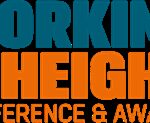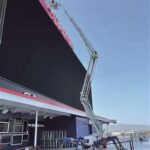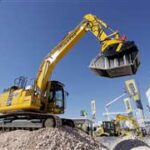Operating a boom lift looks easy.
There’s a joystick. There’s a platform. You go up. You come down.
How hard can it be?
Answer:
Hard enough that it can get you seriously hurt—or seriously sued—if you’re not trained properly.
Before you even think about touching those controls, here’s what you absolutely need to know (and do) to become a certified, confident, and safe boom lift operator.
🛡️ Why Training Isn’t Optional
-
It’s the law: OSHA, ANSI, and other regulatory bodies require proper training before operating aerial lifts.
-
It saves lives: Boom lift accidents often happen because of poor operation, not machine failure.
-
It protects jobs: Certified operators = happier insurance companies + fewer lawsuits.
-
It keeps projects on schedule: No shutdowns, no citations, no drama.
Untrained operation isn’t just risky.
It’s irresponsible—for you, your team, and your company.
📚 What Boom Lift Operator Training Covers
A solid boom lift course will teach you:
✅ Equipment inspection
How to spot leaks, wear, sensor errors, and mechanical red flags before they become disasters.
✅ Safe operating practices
Driving, lifting, turning, parking—all while factoring in wind, slope, load, and terrain.
✅ Fall protection
How to properly wear a harness, tether it, and avoid becoming a human meteorite.
✅ Emergency procedures
Lowering platforms manually. Using ground controls. Handling stuck or disabled lifts safely.
✅ Load management
Calculating weight limits, distributing load evenly, and never pushing the machine beyond specs.
✅ Surface and weather awareness
Identifying safe vs unsafe surfaces—and why “it looks okay” isn’t good enough.
✅ Shutdown and parking best practices
Because “just park it anywhere” is not a strategy.
🧠 Certification Basics
| Requirement | Details |
|---|---|
| Classroom Theory | Lift types, safety rules, load handling |
| Practical Hands-On Training | Operating, navigating, emergency drills |
| Evaluation/Test | Written + skills assessment |
| Validity Period | Typically 3–5 years before renewal needed |
| Certification Record | Must be kept on file at the worksite |
In most regions (like the U.S. under OSHA), both classroom and hands-on practical training are mandatory.
🎯 Who Can Train You?
-
Accredited training centers
-
Manufacturer-certified programs (Genie, JLG, etc.)
-
Third-party safety organizations
-
In-house corporate trainers (for large companies)
Good training providers issue an operator card and certificate upon passing.
Keep it handy—you’ll need it onsite.
🛠️ Bonus: What You’ll Practice on the Lift
-
Pre-operational inspection (daily checklist)
-
Setting outriggers or wheel chocks (if required)
-
Raising/lowering platforms safely
-
Moving the boom smoothly without jerky motions
-
Driving while elevated (if allowed)
-
Emergency lowering procedures
Practice until it’s muscle memory—because one day, it could matter more than you think.
❗ Common Rookie Mistakes to Avoid
-
Forgetting to check wind conditions
-
Overloading platforms with tools or materials
-
Ignoring tilt alarms or audible warnings
-
Driving too fast while elevated
-
Improper harness attachment (wrong anchor points)
-
Operating without ground communication support
Boom lifts are tough, but gravity is tougher.
Mistakes up high cost more than just time—they can cost lives.
🧠 Pro Tip: Get Familiar With Your Specific Machine
Even after certification, always do a model-specific orientation when switching to a different type or size of lift.
Why?
Because controls, load ratings, and behavior vary between:
-
Articulating vs telescopic booms
-
Electric vs diesel drives
-
Indoor vs rough-terrain models
New machine = new mindset.
🏁 Final Thoughts
Becoming a trained boom lift operator isn’t just a checkbox.
It’s a commitment—to safety, skill, and professional respect.
When you hold that joystick, you hold:
-
Your life
-
Your coworkers’ lives
-
Your company’s trust
-
Your career’s future
So get trained. Get certified. Get serious.
Lift with pride—and with knowledge.




